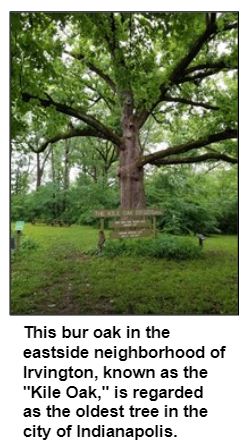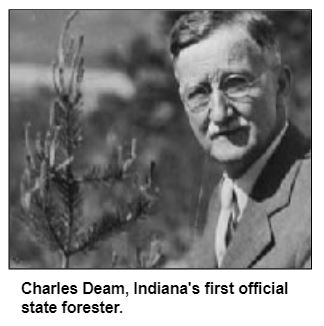Apr 10, 2020
Because April includes Earth Day, Hoosier History Live will take the opportunity to explore tree planting crusades in Indianapolis, which have far deeper "roots" than many folks assume.
Clear back in the 1850s - when the pioneer era wasn't even a distant memory and the Hoosier capital was not yet 40 years old - some residents were concerned about the loss of the city's tree canopy. In the spring of 1858, they organized the Shade Tree Association of Indianapolis to beautify the rapidly growing urban area with trees.
Nelson's guest, Indianapolis attorney Ed Fujawa, has researched their crusade - as well as subsequent, periodic efforts to increase the city's tree canopy - for his blog about Indy history, Class 900. Ed is vice president of the Butler Tarkington Neighborhood Association and a member of the Meridian Street Preservation Commission.

Even so, Ed adds: "Interestingly, locust trees are still prominent throughout downtown, including around Monument Circle."
Flash forward to the spring of 1990. That's when the city of Indy launched a Trees for Tomorrow program, a local version of a national endeavor kicked off by then-President George H.W. Bush. He visited Indianapolis to plant an American elm tree.
"It was a descendant of a tree planted in the 1820s during the presidency of John Quincy Adams," Ed writes on his Class 900 blog. "The tree was planted in what turned into Presidential Place Park, a pocket park adjacent to the present-day Julia M. Carson Transit Center. The tree is still there."
In recent decades, Keep Indianapolis Beautiful has spearheaded the plantings of thousands of trees across the city.
During our show, Ed Fujawa also will discuss 19th century tree planting crusades in other Indiana cities and towns, including Delphi in Carroll County.
In addition, he will describe the efforts during the early 1900s of Charles Deam, who served as Indiana's first official state forester. Deam (1865-1953) was born on a farm near Bluffton in northeastern Indiana. After he became a prominent botanist, several species of plants were named in his honor.

A sampling of history facts:
- Calvin Fletcher, the most prominent civic and business leader in early Indianapolis, was heavily involved in the Shade Tree Association.
- Class 900, the name for Ed Fujawa's blog, is derived from the Dewey Decimal classification used by libraries. History-related books typically are found in the 900 section.
- The oldest tree in Indianapolis is generally
considered to be a bur oak in the
eastside Irvington neighborhood. Known
as the Kile
Oak because a family named Kile owned the
property during the early 1900s, the tree may be about 400 years
old, according to the Irvington Historical
Society.